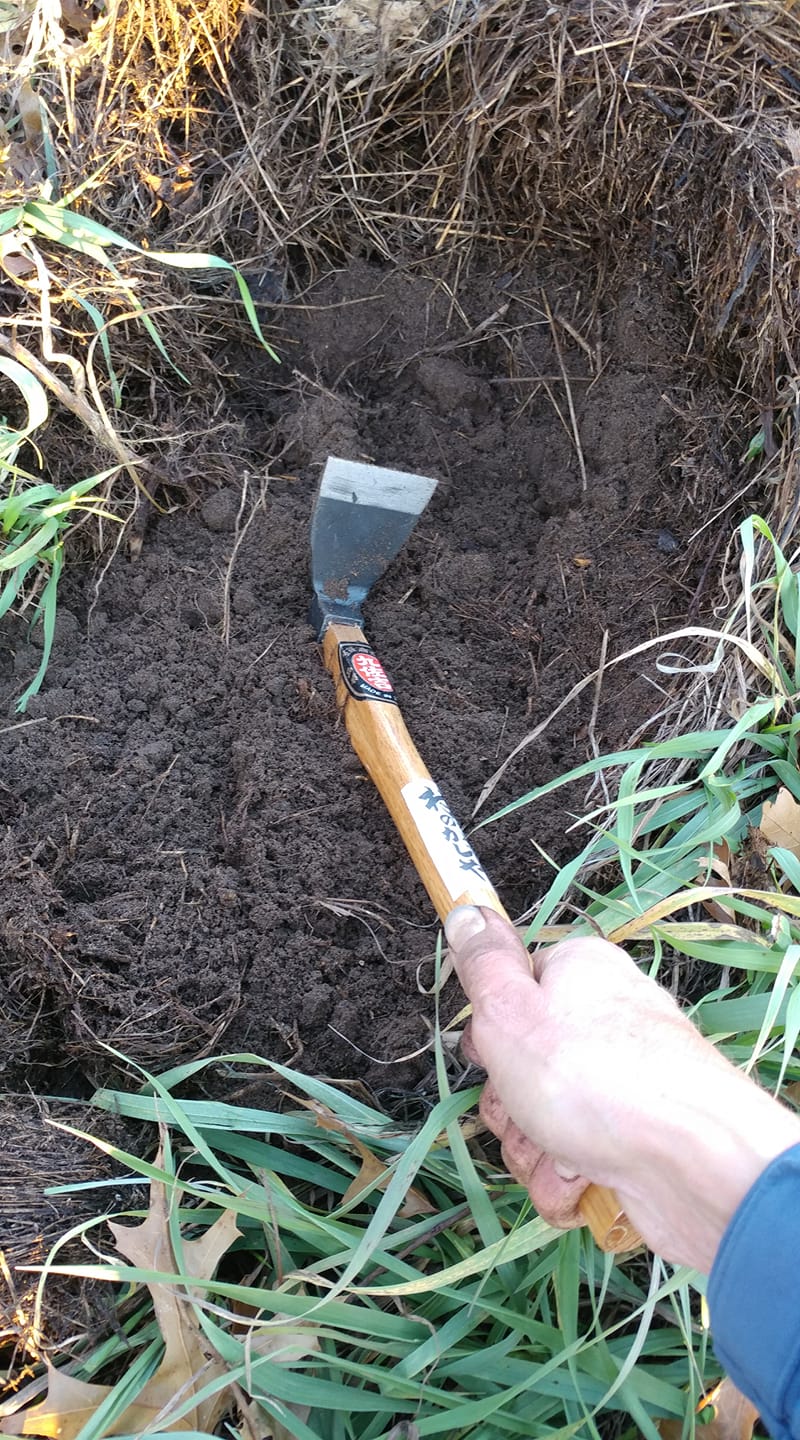
The hoe is somewhat lighter in weight and is set at a sharper angle. That is how I managed to hit the rocks I talked about in my last post.Ī related hoe that we also purchased is the Italian grape hoe. In fact, I am able to dig down deeper with the grub hoe than I could with a tiller. For working small areas and raised beds they are much better than a roto-tiller. A lighter weight and narrower version is available. The grub hoes we bought are 6 inches wide with a 5 foot long handle and weigh 3 pounds. Digging with a shovel or spade causes me a great deal of discomfort, but, although I need to rest occasionally, I am able to work up a fairly large area without having back pain. Handled azada you use your whole body to pull the thin slice of soil towards you into a previously cleared space.” I have had lower back problems for many years and I can attest to the truth of the above statement. Instead of leaning over to lift the shovel load of soil with your back, with the long Gravity, and a little help from your arms. Shovel blade into the earth, the heavy-duty grub hoe blade swings from hip height down into the soil using it’s own weight, Using a grub hoe (also called an Azada) is very different from using a shovel or spade. The following is taken from a web page of a company selling the grub hoe. The above illustration shows the motion used. The grub hoe makes digging and cultivating with an easy chop-pull motion that is quick, but is SO much easier and gentler on the back than the stomp-bend-lift motion used with a shovel or spade. Last summer Darryl, Danny and I all purchased grub hoes. In Okinawa it is called a kuwa, kue and gawa, where it is also a traditional Martial Arts weapon. In parts of Asia they are known as changkol or changkul. In India they are called powrah, mammoty or mamooty.

They are known as azada in Europe and South America. And, as I mentioned in my title they are called by many different names around the world. The Chinese man in this picture is holding two of this type of hoe. Longer handled hoes make the job much easier for the user and makes for easier digging of the soil than using a shovel or digging fork. It enables the user to dig deep into the soil. As pictured here, the blade is quite long and heavy.

In many areas the hoe that is commonly used has a very short handle, causing numerous back problems. Most of us are quite familiar with the common garden hoe, a light-weight metal hoe used for weeding and digging the surface of the soil.īut, the hoes used by the majority of the people of the world, especially third word countries, is of a much heavier type. This photo, taken from an internet site, shows the front, back and side of a chipped or flaked stone hoe. Some of the earliest inhabitants of the Americas used hoes made from the bones of the animals they killed for meat, from mussel shells and of stone. The photo on the right is of an old iron Roman hoe. On the left is a hoe made from bison scapula or shoulder blade. Hoes have been made of animal antlers and shoulder blades, of shells, of flaked stone and of course, various types of metal.

The earliest known hoes were forked sticks. Perhaps the most ancient and the most widely used agricultural tool is the hoe.



 0 kommentar(er)
0 kommentar(er)
